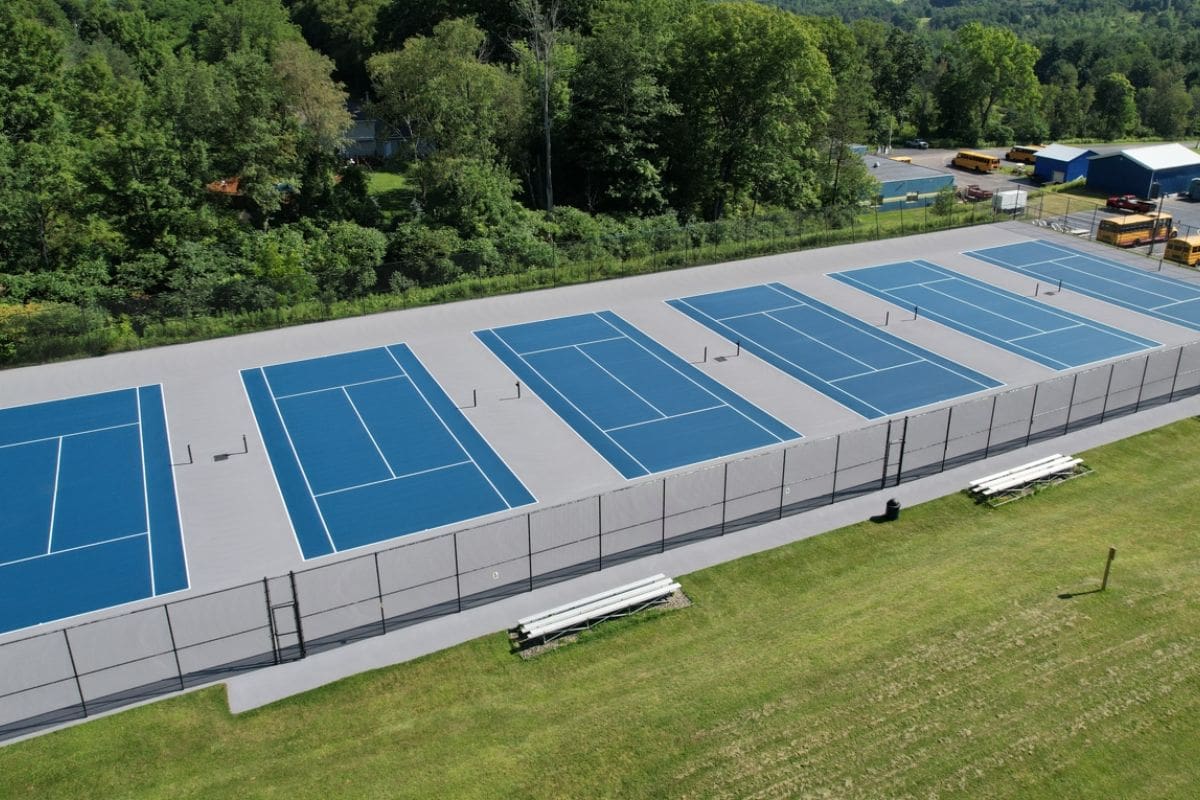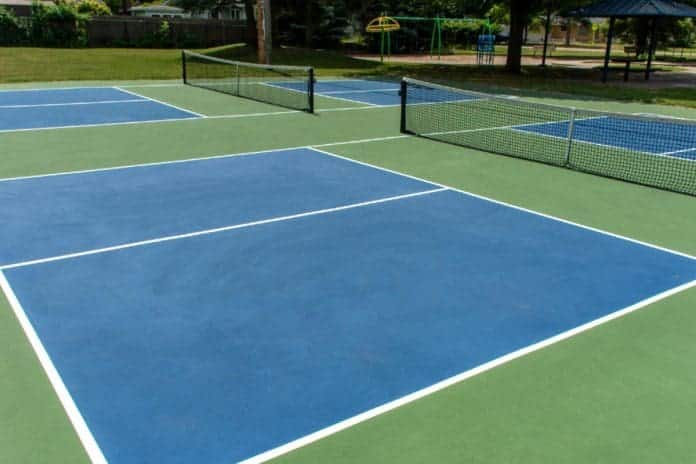Pickleball Court Surfaces: In pickleball, the surface beneath one’s feet can be just as crucial as the paddle in hand. From the relentless bounce of hard courts to the cushioned comfort of specialized surfaces, each type of court presents its own set of advantages and challenges. Understanding these differences can significantly influence performance and enjoyment on the court.
Cushioned Surfaces: The Comfort Revolution
For those who prioritize comfort alongside performance, cushioned court surfaces present an appealing alternative. Made from materials like acrylic or rubber, these surfaces provide a layer of shock absorption that eases the impact on joints. This added cushioning can make longer play sessions more bearable and reduce the risk of injuries.
Cushioned courts do not sacrifice performance for comfort. They maintain a consistent ball bounce and speed, though the game may be slightly slower compared to hard courts. This slower pace can benefit players who focus on control and precision rather than raw power. Furthermore, cushioned surfaces are versatile enough to be installed both indoors and outdoors, catering to diverse playing environments.
Hard Courts: The Tried-and-True Standard
Hard courts, constructed from concrete or asphalt, stand as the choice for many pickleball enthusiasts. Their appeal lies in their consistency—each bounce of the ball is predictable, and the pace of the game is brisk. This predictability makes hard courts ideal for competitive matches, where precision and speed are paramount.
The durability of hard courts is another key benefit. Built to withstand heavy traffic, they require minimal upkeep, making them a staple at community centers, recreational facilities, and prominent events like the US Open. The even surface allows players to execute their shots with accuracy, contributing to a dynamic and engaging game.
However, the relentless nature of hard courts can take a toll on the body, particularly the joints. Extended play on these surfaces can lead to discomfort or injuries, necessitating the use of cushioned footwear or alternative surfaces to alleviate the strain.
Clay Courts: A Unique Challenge
Though less common in pickleball compared to tennis, clay courts offer a distinctive playing experience. Known for their ability to slow the pace of the game, clay surfaces absorb more energy from the ball, resulting in higher bounces and extended rallies. This characteristic suits players who excel in strategic play and consistency.
Clay courts also provide superior traction, thanks to the fine particles that grip the players’ shoes. This traction enhances agility and footwork, allowing for quick direction changes and precise movements. While not a traditional choice for pickleball, clay courts can offer a unique and enjoyable challenge for those seeking to diversify their game.
The Final Verdict
Each type of court surface brings its flavor to the game of pickleball. Hard courts are celebrated for their speed and consistency, cushioned surfaces for their comfort and injury prevention, and clay courts for their strategic depth and traction. The best choice ultimately depends on personal preference and playing style.
Understanding these surfaces can help players make informed decisions about where to play and how to adapt their strategies. Whether it’s the fast-paced thrill of a hard court, the cushioned comfort of specialized surfaces, or the strategic challenges of clay, each option offers a different way to enjoy and excel in the game of pickleball.

News in Brief: Pickleball Court Surfaces
Understanding the impact of different pickleball court surfaces can significantly influence player performance and enjoyment. Hard courts offer speed and consistency, ideal for competitive play, but can be tough on joints. Cushioned surfaces, made from materials like acrylic or rubber, provide shock absorption and comfort, reducing injury risk while maintaining ball bounce and speed.
Clay courts, although less common, slow the game’s pace and enhance traction, favoring strategic play. Each surface type presents unique benefits and challenges, helping players tailor their game to their preferences and playing style.
Also Read: Novak Djokovic Expresses Concerns Over Pickleball Impacting Tennis

